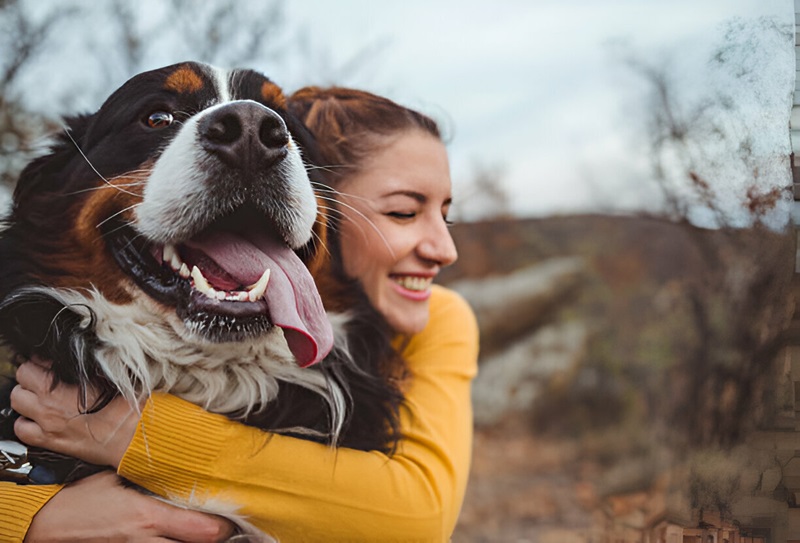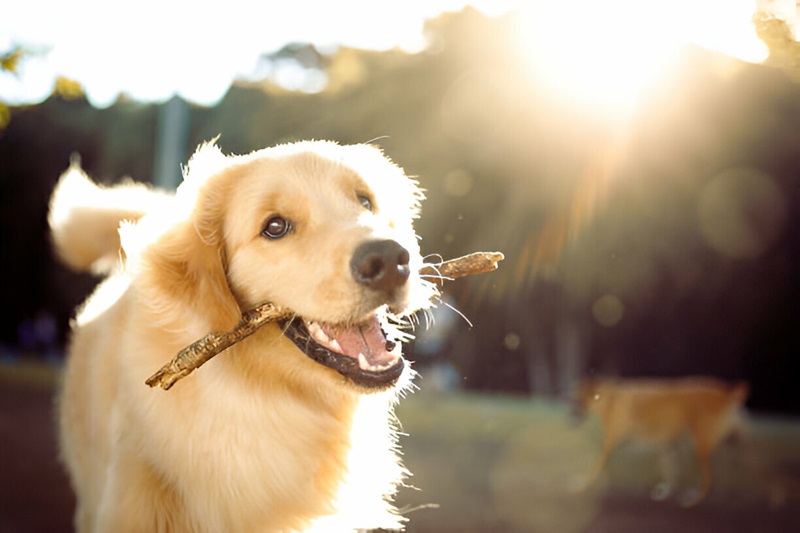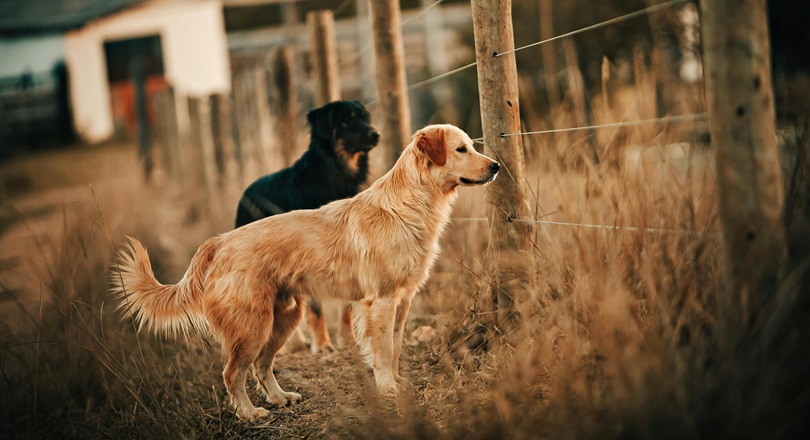Last Updated on February 28, 2025
Dogs are loyal and social animals, known for their affectionate and protective nature. They thrive on companionship and activity.
Dogs, often referred to as man’s best friend, have been companions to humans for thousands of years. Their nature is characterized by loyalty, intelligence, and an eagerness to please. They come in various breeds, each with distinct traits and behaviors.
Dogs are highly social creatures that form strong bonds with their human families. They require regular exercise, mental stimulation, and social interaction to stay healthy and happy. Training and socialization from a young age help in developing well-behaved pets. Understanding a dog’s nature ensures a harmonious and fulfilling relationship between the pet and its owner.

The Evolutionary Journey Of Dogs
The story of dogs is a fascinating tale of transformation. From wild wolves to our closest companions, dogs have come a long way. This journey involves significant genetic and behavioral changes. Let’s explore this incredible evolutionary journey of dogs.
From Wild Wolves To Domesticated Companions
Thousands of years ago, wild wolves roamed freely in the forests. They hunted in packs and lived in a strict hierarchy. Some wolves began to follow human camps for food scraps. Over time, humans and these wolves formed a mutual relationship.
Humans started to tame and breed these friendly wolves. These tamed wolves eventually evolved into the first domesticated dogs. They provided protection, hunting assistance, and companionship. This marked the beginning of the special bond between humans and dogs.
Genetic Milestones In Dog Evolution
The evolution of dogs includes important genetic milestones. Scientists have discovered several key changes in dog DNA. These changes helped dogs adapt to living with humans.
- Digestion of Starch: Dogs developed the ability to digest starch. This allowed them to eat human food.
- Behavioral Traits: Changes in genes led to friendlier and more social behaviors.
- Physical Appearance: Selective breeding resulted in various dog breeds with different sizes, shapes, and coat types.
These genetic changes played a vital role in the domestication process. They helped dogs become the loyal and loving pets we cherish today.
Understanding Canine Behavior
Dogs have been our loyal companions for centuries. To truly connect with them, we must understand canine behavior. By learning their signals and instincts, we can create a harmonious bond.
The Language Of Barks And Whines
Dogs communicate through barks and whines. Each sound has a meaning. A high-pitched bark often shows excitement or happiness. Growls can signal fear or aggression. Whining may indicate discomfort or a need for attention.
To understand these sounds, observe the context. Is your dog hungry? Are they feeling lonely? Recognizing these cues helps you respond appropriately.
Pack Mentality In Household Pets
Dogs are pack animals by nature. They thrive in a structured environment. In the wild, they follow a leader. In your home, you become their leader. Establishing this relationship is crucial for a well-behaved pet.
Pack mentality means dogs seek a clear hierarchy. They feel secure knowing their place. To reinforce this, use consistent commands and routines. Reward good behavior with treats and praise.
Here’s a quick table to summarize common dog behaviors and their meanings:
| Behavior | Meaning |
|---|---|
| Tail Wagging | Happiness or excitement |
| Growling | Fear or aggression |
| Whining | Discomfort or attention-seeking |
| Barking | Alert or communication |
Understanding these behaviors can deepen your bond with your dog. It ensures a happier, healthier relationship.

The Emotional World Of Dogs
Dogs have rich emotional lives. They feel joy, sadness, and fear. Understanding their emotions can deepen our bond with them. Let’s explore their emotional world.
Empathy And Attachment In Dogs
Dogs are highly empathetic. They sense our moods and respond. If you are sad, your dog may comfort you. This is empathy at work.
Attachment is also strong in dogs. They form close bonds with their owners. These bonds are built on trust and affection. Dogs show attachment by staying close and seeking attention.
| Emotion | Dog’s Response |
|---|---|
| Happiness | Wagging tail, playful behavior |
| Sadness | Quiet, seeks physical contact |
| Fear | Hiding, trembling |
Recognizing Stress And Anxiety
Dogs can feel stress and anxiety. Recognizing these signs helps us support them better. Look for these signs:
- Panting
- Pacing
- Excessive licking
- Hiding
Stress can arise from many sources. Loud noises, new environments, or separation can cause stress. To help, create a calm and safe space.
Regular routines and gentle reassurance also reduce anxiety. Please pay attention to their needs and cues.
Canine Intelligence Unveiled
Dogs are not just loyal companions. Their intelligence often surprises us. They solve problems, learn new tasks, and understand commands. This section explores their amazing mental abilities.
Problem-solving Skills And Trainability
Dogs show impressive problem-solving skills. They often find ways to get what they want. For example, some dogs open doors to go outside. Others figure out how to get treats from hard-to-reach places. This ability makes them very adaptable.
Training dogs can be easy or hard. It depends on their breed and personality. Some breeds learn commands quickly. Others need more time and patience. Here is a table of some common breeds and their trainability:
| Breed | Trainability |
|---|---|
| Border Collie | Very High |
| German Shepherd | High |
| Bulldog | Low |
The Concept Of Dog Iq
Dog IQ is a way to measure a dog’s intelligence. It includes memory, problem-solving, and learning speed. Some dogs have higher IQs than others. Here are some signs of a high IQ in dogs:
- Quickly learning new commands
- Understanding human emotions
- Solving puzzles or opening doors
Testing a dog’s IQ can be fun. You can use simple games and tasks. For example, hide a treat under a cup. See if your dog finds it quickly. This tests their problem-solving skills.
The Physicality Of Dogs
Dogs come in many shapes and sizes. Their physical traits vary greatly. These traits often depend on their breed.
Breed-specific Traits And Abilities
Each dog breed has unique traits. These traits affect their abilities and behavior. Here are some examples:
- Greyhounds are known for their speed.
- Bulldogs are famous for their strength.
- Border Collies excel at herding sheep.
These traits make each breed special and valuable in different tasks. For instance, Labrador Retrievers are excellent swimmers. They often work in rescue missions.
Understanding Canine Health
Canine health is crucial for a dog’s well-being. Regular check-ups help in the early detection of health issues. Here are some common health concerns by breed:
| Breed | Common Health Issues |
|---|---|
| German Shepherd | Hip Dysplasia, Arthritis |
| Pug | Breathing Problems, Obesity |
| Golden Retriever | Heart Disease, Cancer |
Understanding these health issues helps in better care. Regular exercise and a balanced diet are vital for a healthy dog.
Frequently Asked Questions
What Are The Characteristics Of A Dog?
Dogs are loyal, friendly, and social animals. They have a keen sense of smell and hearing. They require regular exercise and mental stimulation. Different breeds exhibit various behaviors and traits. They are often used as pets, working animals, and therapy companions.
What Is The Natural Behavior Of A Dog?
Dogs are social animals. They enjoy companionship, play, and exploration. They exhibit loyalty, curiosity, and protective instincts.
What Are Dogs’ Personalities?
Dogs’ personalities vary widely. Some are playful and energetic, while others are calm and affectionate. Many dogs are loyal, friendly, and protective. Breeds often influence traits, but individual personalities differ. Socialization and training shape behavior. Understanding your dog’s unique character fosters a strong bond.
What Are The Attitudes Of Dogs?
Dogs are friendly, loyal, and playful. They show affection, protect their families, and enjoy social interactions. Each dog has unique traits.
What Are Common Dog Behaviors?
Dogs often bark, dig, chew, and show affection. These behaviors are natural and vary by breed.
How Do Dogs Communicate?
Dogs communicate through body language, barking, and facial expressions. Tail wagging and ear positioning are key indicators.
Conclusion
Dogs are truly remarkable companions. Their loyalty and unique personalities bring joy to many lives. Understanding their nature helps us build better relationships. Appreciate your dog’s quirks and strengths. Cherish the bond you share. Embrace the joy they bring daily.
Celebrate the special nature of dogs.

